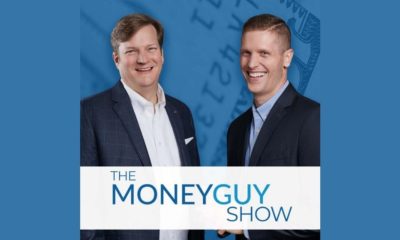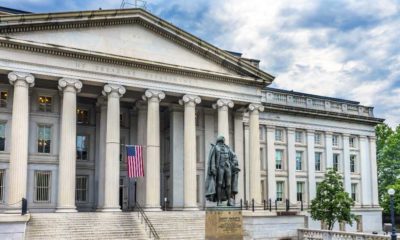brand
Behind The Greatest Cheap Investment Funds

Many financial experts and investors, including Warren Buffett, will tell you to invest in funds that don’t have outrageously high fees.
Tons of research backs this advice up.
Buffett says that a low-cost index fund is sensible in terms of an equity investment for many investors.
The Research Behind It All
For those of you who like research a little more than quotes, there is a company called Morningstar.
It is a research firm that tracks over a thousand investment firms and rates them based on what they find.
After years of research, Morningstar has discovered that low fees are a proven predictor that there will be fund returns in the future.
This essentially means that the lower the fee, the more likely you are to make money on the fund once its performance spikes, as the graph below shows.
The low-cost fund spikes much more than the higher cost fund does, ending with a difference of around $50,000.

What The Experts Will Tell You To Look For
One Morningstar employee, Russel Kinnel, warns that investors should not only look at the fees but that they should use them as a way to narrow down a list of potential investments.
In particular, you should look for cheaper than normal funds.
The average fees, or expense ratios, for the United States stock funds (and bonds, for that matter) are as follows:
United States Stock ETFs: 0.41%
United States Investment Grade Bond ETFs: 0.28%
United States Actively Managed Stock Funds: 1.34%
United States Actively Managed Investment Grade Bond Funds: 1.04%
[ms_divider style=”normal” align=”left” width=”100%” margin_top=”30″ margin_bottom=”30″ border_size=”5″ border_color=”#f2f2f2″ icon=”” class=”” id=””][/ms_divider]
[ms_featurebox style=”4″ title_font_size=”18″ title_color=”#2b2b2b” icon_circle=”no” icon_size=”46″ title=”Recommended Link” icon=”” alignment=”left” icon_animation_type=”” icon_color=”” icon_background_color=”” icon_border_color=”” icon_border_width=”0″ flip_icon=”none” spinning_icon=”no” icon_image=”” icon_image_width=”0″ icon_image_height=”” link_url=”https://offers.thecapitalist.com/p/warrenbuffet/index” link_target=”_blank” link_text=”Click Here To Find Out What It Said…” link_color=”#4885bf” content_color=”” content_box_background_color=”” class=”” id=””]Warren Buffett Just Told His Heirs What He Wants them To Do With His Fortune When He Dies. [/ms_featurebox]
[ms_divider style=”normal” align=”left” width=”100%” margin_top=”30″ margin_bottom=”30″ border_size=”5″ border_color=”#f2f2f2″ icon=”” class=”” id=””][/ms_divider]
The Jargon Around Bonds Translated For Your Convenience
ETFs are exchange-traded funds.
These are basically the cheapest option.
This is because they are duplicating a group of stocks that are already widely known.
These are managed by computers.
On the other hand, an actively managed fund has actual, real-life people attached to it that will personally select bonds and stocks that they think suit you.
These cost more because you basically pay someone to anticipate the market changes and win.
What An Expense Ratio Is Made Up Of
Expense ratios are made up of a few things.
First of all, there is an investment advisory fee.
This is also called a management fee, and it refers to the money that you pay the people who manage the mutual fund.
Second, you have administrative fees.
This money goes into the keeping of records, mailing, and a line for customer service.
Finally, you have a distribution fee. It is used for advertisements and marketing when you have a fund with a 12b-1 fee.
When choosing a stock or bond, learn all of the costs and decide if it’s really worth it to you.
The cheapest funds are often going to bring in the most profit without breaking your bank on the startup.
Finding The Cheapest Funds
Researchers, including Morningstar and CNNMoney, have found the ETFs with the smallest fees.
These funds make an attempt at duplicating how an index, like S&P 500, performs, so their returns don’t turn out that much differently.
It is fairly easy to invest in these companies because many of them are widely known, including Vanguard, Blackrock, and Schwab.
These three particular funds, as well as many others, are open to any investor, so you only need a small amount of money to start.
This could range from $50 to $100.
And if they manage to have a 3/5 rating from Morningstar, it puts them in the top 2/3 for funds based on their performances, as well as their risks.
Stats About Well-Known Stock ETFs in the United States
- Schwab (Broad Market ETF): 0.03% Fee
- Schwab (Large-cap ETF): 0.03% Fee
- Blackrock (iShares Core S&P Total): 0.03% Fee
- Vanguard (500 ETF): 0.05% Fee
- Vanguard (Total Market): 0.05%
Stats About Well-Known Bond ETFs in the United States
- Schwab (Aggregate Bond ETF): 0.05% Fee
- Vanguard (Total Bond Market ETF): 0.06% Fee
- Schwab (TIPS ETF): 0.07% Fee
The Bottom Line
If you’re going to remember anything from this article, have it be this:
Before investing in a stock or bond with a cost, or fee, higher than around 0.4%, ask questions to figure out why.
If you’re paying a premium, you should figure out the reasoning behind it before going in headfirst.

As the chart above shows, just because a company has an expensive fee or is difficult to invest in, this doesn’t guarantee that you will receive any large returns from it.
Funds with lower fees typically do better in the market.
So before you invest in anything, make sure to do your research.
Check the company on Morningstar, or other research firms, and know all of the facts before making an informed decision.















